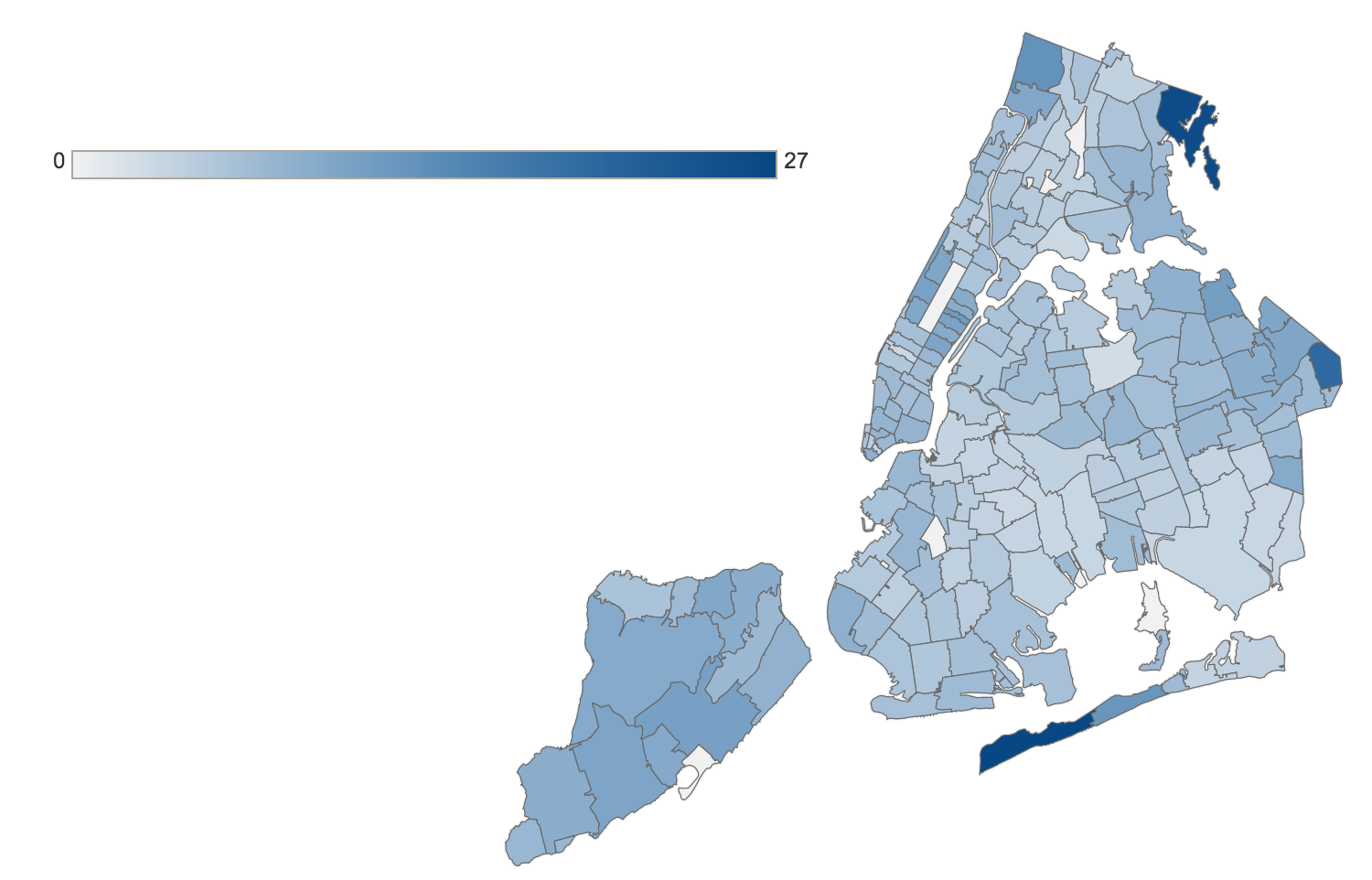'Shameful' Rockaway Peninsula vaccination rates illustrate zip code-level disparities
/St. John’s Episcopal Hospital in Far Rockaway began administering COVID-19 vaccines to staff members in December 2020. Just 4 percent of adults in the zip code containing the hospital have received their first doses. Photo courtesy of St. John’s Episcopal Hospital
By David Brand and Rachel Vick
Perhaps nowhere in New York City better illustrates the stark contrasts in COVID-19 vaccine rates than the Rockaway Peninsula — a narrow strip of land largely segregated based on income and race.
The zip code with the city’s highest vaccination rate is also one of the whitest communities in Queens: 27 percent of adults in Breezy Point zip code 11697, the western tip of the Rockaway Peninsula, have received at least their first dose of the life-saving vaccines, new city data shows.
That’s nearly seven times higher than the vaccination rate in the eastern portion of the peninsula, home to the predominantly Black communities of Far Rockaway, Arverne and Edgemere. Just 4 percent of adults have received the COVID-19 vaccine in zip codes 11691 and 11692, which cover those three neighborhoods.
But the Rockaways represent just one clear example of the disparities evident in new zip code-level data released by New York City’s Health Department Tuesday. Throughout the five boroughs, white and wealthier neighborhoods are getting vaccinated, while poorer communities of color are not.
“I am not shocked one bit,” said Queens Borough President Donovan Richards, who represented the eastern portion of the Rockaway Peninsula in the city council.
Richards pointed to the slow introduction of COVID testing sites in the region and the overall dearth of medical facilities. Throughout the pandemic, Black and Latino neighborhoods of Queens have been hit hardest while receiving the least amount of support, he added.
“It’s shameful that a community like Far Rockaway, that has one of the highest death rates in the city, does not have a vaccine site in its backyard,” Richards said. “The mere fact that we don’t have vaccination sites set up in these pockets is why we see these disparities.”
The new zip code-level data comes less than three weeks after demographic reports revealed the deep racial and ethnic disparities evident in vaccination rates citywide. White people had received 48 percent of all vaccines in New York City despite making up about one-third of the population.
In contrast, Black New Yorkers had received 11 percent of vaccines while accounting for 24 percent of the population, the city data showed. Latino New Yorkers had received 15 percent of vaccines despite making up 29 percent of the population.
“The figures published today show the scale of the challenge in front of us,” said Mayor Bill de Blasio Tuesday. “Just as we’ve seen, there’s much smaller proportion of vaccines going to Black and Brown New Yorkers. We see these geographic disparities bearing out as well.”
In May, the Eagle examined the lethal impact of COVID-19 in six Queens zip codes, including Far Rockaway’s 11691, which had the city’s second highest COVID death rate at the time. The other zip codes covered parts of Corona, Jackson Heights and Flushing.
None of the zip codes analyzed in that article recorded vaccination rates higher than 7 percent Tuesday.
Only 3 percent of adults have received their first vaccines in Corona’s 11368, an overwhelmingly immigrant neighborhood with one of the city’s highest death rates during in the pandemic’s peak. In neighboring 11369 (East Elmhurst) and 11370 (Jackson Heights and Rikers Island), 5 percent of adults got their first dose, the data shows.
Many of the lowest vaccine rates in the borough are concentrated in the majority Black communities throughout Southeast Queens.
In 11434 (Jamaica, Springfield Gardens and St. Albans), for example, just 2 percent of adults have received their first COVID vaccines.





